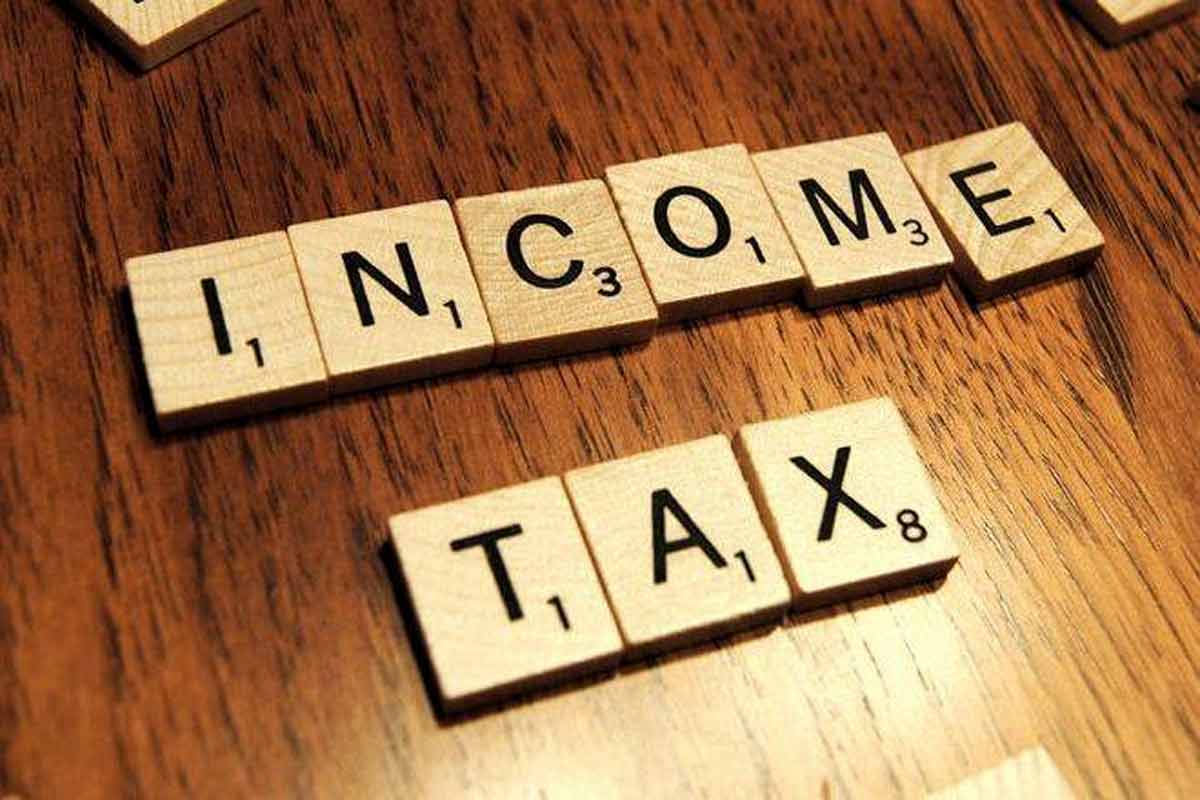Personal Finance: An Ultimate Guide And Introduction To Its 101

The world is revolving and upgrading itself. We cannot deny that being financially independent is a prerequisite for living freely today. This is where personal finance comes to the rescue. It is a relief in a world of dependency and fraud. A fundamental terminology that needs to be understood should be taught in the curriculum at the school level. It provides practical insight and gives an upcoming youth of today economic empowerment.
What is Personal Finance?
As the cumulation of two words suggests, personal finance is managing and pre-planning one’s budget, keeping short, medium, and long-term goals handy. It helps in financial soundness and keeps one updated with their expenses. Let’s dive into the ultimate guide to personal finance with a formula incorporated at the end for ease of understanding and making the best decision.
The Basic Terminology
This head revolves around explaining the basic terminology required to jump-start the course in full swing. We are introduced to the finance jargon like budget, income, expense, saving, investments, assets, liabilities, capital gains, and cash flow. The terms were pretty simple and if you are from a commerce background, it didn’t take long to understand. However, if you aren’t, then
Budget: It is a financial blueprint that estimates the income and expenses of an individual for a given period. It is generally, like a forecast or expectations set by the individual for an upcoming time.
Assets: An asset is anything that gives the individual sets or another entity a current, future, or potential economic advantage.
Liabilities: A liability is a debt that a person or company owes to another party, usually in the form of money. They are resolved over time by exchanging economic benefits such as money, products, or services.
Capital Gain: The profit earned on the sale of an asset such as stocks, bonds, or real estate is known as a capital gain. When the selling price of an asset exceeds its acquisition price, it results in a capital gain. It is the gap between the asset’s selling (higher) and cost (lower) prices.
Cash flow: Cash flow refers to the quantity of cash or cash equivalent a corporation gets or expends as payment(s) to creditors.

This being taught, the pillars of finance are what we are proceeding with. There are seven pillars of finance though, in this part, we will detail 4 of them. The seven posts, however, are: -earning, spending, saving, budgeting, invest–ing, tax planning, and insurance.
We should aim at maximizing our earning potential by enhancing our skill set, making connections in the industry, and engaging in maintaining a diversified earning portfolio. The earned earnings should then be spent keeping wants and needs in mind. The best way to do so is to divide expenses into several buckets. This whole process of analyzing the income and expense game and saving a certain sum is called budgeting. It’s an ongoing process.
For your clear understanding, the budgeting process is introduced as a reference.
Step 1:Calculation of monthly income, let us assume it to be Rs 10,000.
Step 2: Adding up necessary expenses. Considering you are a student, you don’t have any fixed costs other than a SIP and for a variable payment, let’s say you have a petrol cost to incur. And as you wish to give yourself a good watch, you are setting aside, say, Rs 500/month. This resulted in your total expense being Rs 3000.
Step 3: For discretionary expenses, you set aside a sum of Rs 2000 for partying and stuff.
Step 4: Adjusting the expenses and income, you will realize that you are left with Rs 5000 every month, which for now is just under the head saving, though you can consider this as an investment.
Towards the end, there are some budgeting frameworks you should all be aware of, like the 50/30/20 rule wherein 50% of the income goes towards the needs or necessary expenses, and 30% goes in for wants, and the remaining 20% is taken up by savings. The following framework taught was 80/20, wherein 80% is set aside as saving and the remaining 20% is for investing. Last but not least is the framework I am following called Zero-based budgeting wherein I consider my investments as fixed expenses.
The Credit saga
This head is focused on explaining what a credit score is and ways of improving it. A credit score means that it tells the bank or any financial institution how capable we are of repaying the loan. To incorporate a fun fact, this system was introduced after the global financial crisis of 2008. Let’s now move on to the understanding of credit card eligibility. A sufficient balance along with regular income is the minimum criteria. In this and the type of organization we are working with, our credit limit is set. Due to many financial institutions, credit cards are offered just on a good FD balance.
The credit card bill is to be paid at the end of every month. It is a 22-day long cycle. If unable to pay the bill, heavy interests are charged initially. Then, a letter is sent out to our name to get the title in legal books as a defaulter. And ultimately, a legal proceeding is put into action that may result in the ceasing of collateral.
You might be confused as to how these institutions earn; let me explain. On every transaction, the companies have payment processing fees –: of 2-2.5%, and as for banks, they make through interest from credit card bills.

A credit score is a three-digit number that sums up the information on your credit card. The credit score calculation is when you apply for a loan the lender requests and receive the credit report from credit bureaus that collect the information from various banks, including loan amount, repayment date, default, etc. This report is taken up by agencies that, through their algorithm, generate credit scores. And when we make a payment to some lenders, they report the payment to the credit bureaus.
A brief guide on the improvement of credit score says that the credit utilization ratio introduced means the percentage of spent credit from the credit limit that is advised to be 5-10%. The best and worst credit score is 800 being the best and 100 the worst.
Saving from the tight clutches of Taxation
This is an absolute new realm. It revolves around tax planning strategies. One should be tax-efficient and should know the process of filing the income tax return. Let’s get acquainted with tax planning strategy. Here we are discussing that investing in various schemes like ELSS, PF, PPF, life insurance, etc. helps in saving the taxes. Also, an innovative idea of leveraging the repayment of loans can be regarded as a taxable income deduction, and declaring investments leads to avoiding monthly deduction of taxes in salary. We should also be considered salary restructuring that includes the tax exempted/abated allowance like HRA, meal card, travel allowance, etc.
The most practical aspect is: How to file your ITR?
The steps of filing ITR are given below. It has become an easy and concise process owing to the first-class development of the Internet and thus can be done by anyone. Following are the steps for the same:
Step 1: Register yourself with the e-filing portal by visiting https://www.incometax.gov.in/iec/foportal
Step 2: Proceed to log in and enter your credentials
Step 3: On being logged in, click on a dropdown called e-filing and choose Income tax returns
Step 4: A further dropdown will arise. Choose ‘File Income Tax Returns
Step 5: Select the Assessment year for which you wish to file your income tax returns and click on ‘Continue’.
Step 6: You’ll be prompted to choose between filing your returns online or offline. In this situation, you must select the first option, the suggested method of filing your taxes.
Step 7: Determine if you want to submit your income tax returns as a single person, a Hindu Undivided Family (HUF), or in another capacity. Select the “individual” radio button.
Step 8: Determine which income tax returns (ITR) you want to submit. People and HUFs without revenue from a business or profession, for instance, may file an ITR 2. Similar to how companies pick between ITR1 and ITR4, individuals have two options. To continue with ITR1, you must click this button.
Step 9: The following question will ask you why you filed returns above the basic exemption limit or because of the seventh Section 139 provision (1). According to the clause, a person is eligible to file income tax returns if their total annual deposits in one or more current accounts exceed Rs. 1 crore, they spend more than Rs. 2 lakh on travel abroad, or they pay more than Rs. 1 lakh in power bills. Make sure you select the appropriate choice.
Step 10: Complete the information regarding your bank account. Pre-validate your bank account information if you have already submitted it.
Step 11: A new page where you can file your income tax returns will subsequently be opened for you. There will be a tonne of information already filled out on the website. Please verify that all the notification is accurate by checking them. Verify and review the summary of your returns.

Step 12: The final step is to double-check your returns and transmit a physical copy to the Internal Revenue Service. The verification procedure must be followed.
Let go free of debt
This head commenced with the foreword DEBT. The bifurcation was taught on five bases that are based on security, repayment, period, interest rate, and deduction.
Based on security we have: Secured and Unsecured loans
Based on repayment we have: Revolving and Non-revolving loans
Based on period, we have: Long term, short-term, and medium-term loans
Based on the interest rate, we have: Fixed interest rates and variable interest rate loan
Based on deduction we have: Deductible and Non-deductible loan
The terms listed are easy to comprehend. When choosing to go in for a loan, it is highly suggested to undertake a proper analysis and research with each loan instrument and decide what’s good for your appetite.
The effect of debt on personal finance is a dwindling credit score, mental and physical health due to constant stress and worries, and a negative impact on employment. The best way out is to make a monthly budget and strictly stick to it.
On the Island of risk and repayment
This head revolves around repayment terms and risk calculation. Let us understand the different types of risks like systematic, unsystematic, credit, country, political, reinvestment, interest rate risk, foreign exchange rate, inflationary, and market risk. The risks which are vital for us to understand are inflationary and market risks. A well-defined portfolio is, if not insulated, then at least protected translucently by this risk. Further, we move on to how the change in interest rate impacts lenders and borrowers.
Rising interest rates will lead the borrower to pay more and vice versa. The strength of impact depends upon whether the loan is short-term or long-term. In the case of a loan with a floating/variable rate, the interest cost will rise, however, with the fixed rate, it will be the same throughout.
In the case of a lender, if we have an account with the bank, a financial corporation’s lower rates will enable you to reinvest the money at higher rates as the original loan matures. However if invested in a fixed-rate, environment, it will be insulated from the fluctuations.
Let’s further understand how the home loan interest rate is determined. It is determined by the marginal cost lending rate. It is mainly related to home loans, and it is the lowest interest rate banks can offer, and that is closely linked to the repo rate.
Retirement fabrics and frolic
This head talks about Retirement planning. The first topic to be introduced is primary reasons to plan for your retirement, wherein lack of social retirement benefits in India, medical emergencies, financial independence, and inflation were discussed.
The traditional saving method was degraded because it is said that inflation will keep on rising as the future unfolds. Thus one should take it under consideration and invest in such a manner that we can have more returns. It is advised to divide our lives into stages, understand risk appetite and returns generated in each phase and invest accordingly to generate passive income in the future.
Moving on, the O&O method can be straightened out for you where owning two houses, equity/MF investments along with fixed, and gold investment is advised and, of course, owing as little as we can. A diversified portfolio that balances the risk-return ratio is instructed to be possessed for a relaxed retirement.

This discussion, along with the tax planning one, enabled me to do some research and finally landed me to invest in the ELSS fund. In the event of regular income flow, I will also be sponsoring a sum towards the retirement scheme. Well, the footprints are meant to be followed. Don’t hesitate to do the same.
The seventh in a row
This is a detailed discussion of the sixth session where practical knowledge concerning investment was imparted. We as individuals have different ambitions and explanations of short, medium, and long-term goals. Considering our previous example, it can be decided as a short-term financial goal to execute the budget I drew for myself and invest the savings of 5000 in overnight or ultra-short duration fund. For the medium term, the example plans on implementing a wedding and world tour all by myself. And lastly, for a long time, let’s say you need a financially sound future for which investing in various MFs and retirement schemes tops the list. The amazing fact that many of you might not know is that in India, we have 29 stock exchanges. The factors to consider before opening a Demat account are spread over the internet. Another awe-inspiring fact is that the stock transfer takes place from only two depositories, CDSL & NSDL.
Next, we jump onto the reason for stock price fluctuation. It all depends upon the market forces of demand and supply. More the need, the more the prices and vice versa. The importance of any organization depends not on the value of stocks, but it is market capitalization.
For easy understanding, let’s consider the formula for the same
Market capitalization= stock price*No. of outstanding shares.
Towards the end, let’s discuss the critical elements of Portfolio Management which are diversification, asset allocation, and rebalancing. The power of compounding is underrated. It is the process in which assets earning from either capital gain or interest are reinvested to generate additional earnings over time. It differs from linear growth, where only the principal makes interest every year.
The formula for the calculation of the future value of the investment was also taught, which made it very simple to evaluate the investment instrument.
A=P(1+r/n)(nt)
A= the future value of investments/loans, including interest
P= the principal investment
r= annual interest rate
n= the no. of times that interest is compounded per unit t
t= the time the money is invested or borrowed for
I hope this article has helped you align your personal goals and taught you about different realms of personal finance.




